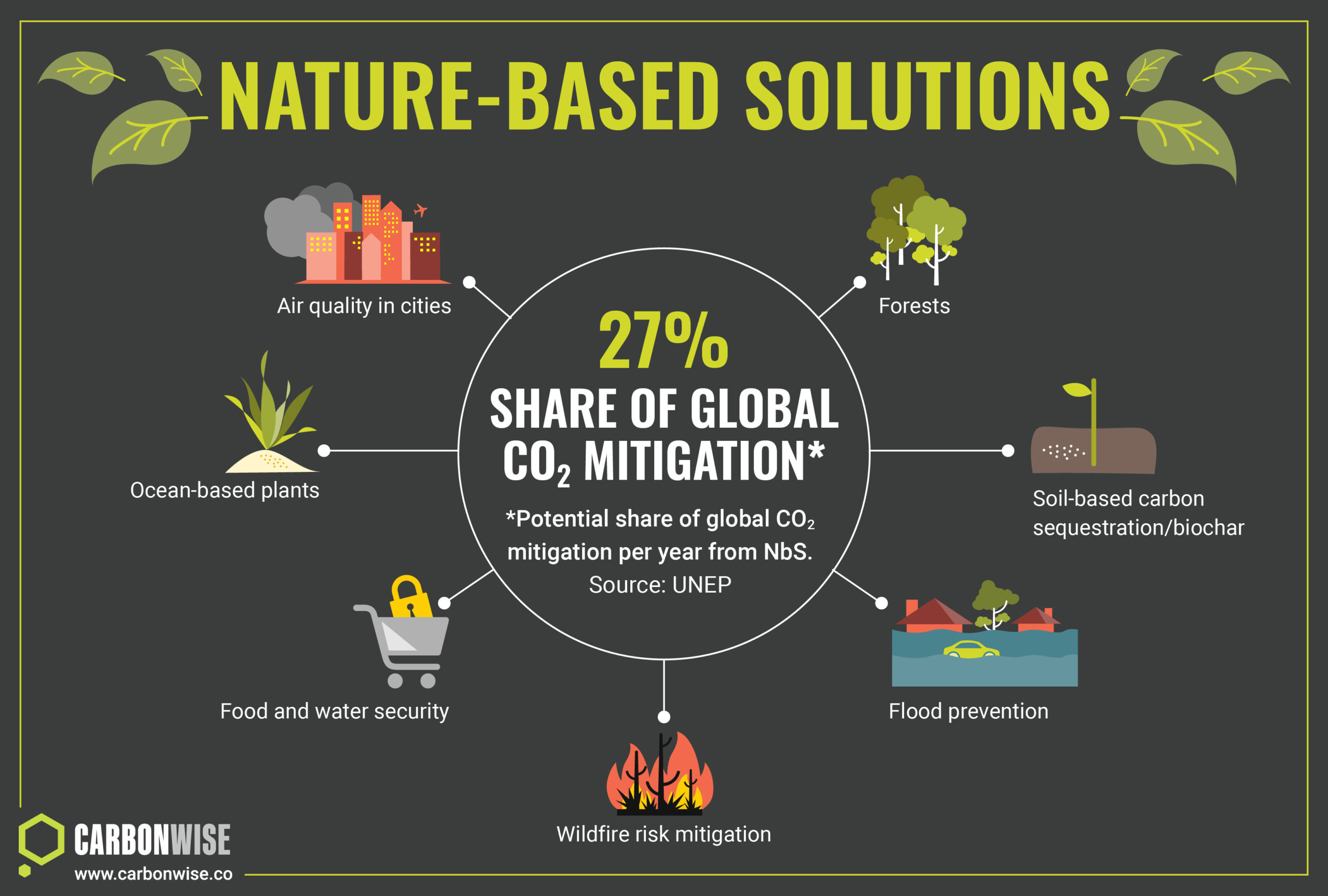Bioenergy with Carbon Capture and Storage (BECCS) is an approach to generating energy which uses sustainable biomass as a feedstock, a renewable energy source, but also captures the resulting carbon emissions permanently to create a ‘carbon negative’ process.
Even without the carbon capture element, biomass-fired electricity generation has less of a negative impact on climate change than equivalent energy plants which burn coal or natural gas.
What fuels a BECCS plant?
A typical BECCS plant uses biomass such as wood pellets. These take the form of standardised cylinders of wood, usually only a few centimetres long, which are burned in a furnace to produce heat.
This heat is then used to turn water into steam in a boiler, and the steam is used to drive turbines which convert kinetic energy into electricity. This electricity can be dispatched for transmission on the national grid or for on-site captive use by an industrial customer.
The wood pellets are standardised for various attributes such as wood type, weight and moisture content, allowing the operator of the BECCS plant to be confident that the fuel will perform reliably when burned in the furnace.
Other types of biomass can also be used for energy generation, such as wood waste, agricultural crops and residues, animal waste and municipal solid waste. However, a BECCS plant would generally be a larger industrial-scale facility which involves a more regulated approach to the biomass fuel, making standardised wood pellets the preferred option in most cases.
How does BECCS capture CO2?
The burning of biomass creates CO2 emissions, and these would normally be vented to the atmosphere in a regular power plant. In a typical industrial-sized BECCS plant, these CO2 emissions are captured in the flue gas using solvent-based chemicals.
The solvent can then be heated to remove the CO2 element, which is then separated and prepared for transportation and storage. The solvent is then recycled back into the carbon capture system.
How is CO2 from a BECCS plant stored?
Once captured, the CO2 emissions from a BECCS plant can be compressed and injected into an underground storage facility. This can take the form of a naturally-occurring porous rock formation such as a saline aquifer or a depleted oil or gas reservoir, or a purpose-built containment facility.
In the case of a naturally-occurring geological site, the CO2 is either held in place below an impermeable layer of rock (as is the case with natural gas deposits locked up for millions of years), which is known as ‘structural storage’ or through ‘mineral storage’ which involves the CO2 chemically reacting with the minerals in the surrounding rocks to create a solid, chalky substance.
Why is biomass cleaner than fossil fuels?
Burning biomass such as wood pellets made from trees creates CO2 emissions in much the same way as burning coal or natural gas. However, unlike fossil fuels, trees absorb CO2 from the atmosphere as they grow, and this happens over a relatively short time frame. This means they simply recycle carbon from the atmosphere to biomass and back again.
By contrast, fossil fuels represent millions of years of accumulated carbon from plants and other organic matter, and burning them introduces ancient carbon back into the atmospheric part of the carbon cycle, overloading it with unnatural amounts of the gas and driving climate change.
If carbon capture is added to a biomass-fired power plant, it becomes a BECCS facility. By trapping and storing the carbon permanently, for example in an underground storage facility, a BECCS plant can actively reduce the atmospheric CO2 concentration.
What are the benefits of BECCS?
The major benefit of BECCS is that the technology can actively reduce the CO2 concentration in the atmosphere, slowing global warming, while generating useful and clean energy.
But it can also create additional side benefits, such as reducing reliance on foreign imports of coal or natural gas, as well as reducing other harmful emissions such as mercury and other toxins which are associated with coal-fired power.
BECCS can also be advantageous in locations which lack other energy sources, such as coal, natural gas or nuclear power.
BECCs can also provide stable baseload power generation, helping to stabilise electricity grids in a world increasingly reliant on intermittent renewable energy sources such as wind and solar.
Proponents of BECCS also say it can be deployed quickly as a known technology, meaning it can play a meaningful role now in achieving the global target to reduce CO2 emissions to net zero by 2050.
What are the drawbacks of BECCS?
However, BECCS does not necessarily deliver the climate impact that some may claim.
For example, if the biomass used to power a BECCS facility is not derived from sustainably-grown sources, then it can simply lead to additional deforestation of old woodland, which could undermine the sustainability claims of its operators.
The additional cost of carbon capture can also make it difficult for a BECCS facility to compete with other energy sources, particularly in jurisdictions which have not yet put a price on carbon emissions through policies like carbon markets or taxes.
In addition, biomass transported across continents, or shipped across oceans, can lead to additional CO2 emissions, depending on the chosen method of transportation.
These additional CO2 emissions should be factored into any balanced analysis of the costs and benefits of a BECCS plant.
However, a BECCS plant can still achieve a carbon negative outcome (negative emissions), so long as the volume of CO2 captured and stored is greater than all emissions associated with the entire process, including harvesting and processing the timber and transportation of the fuels.
Location is also a key issue. Suitable sites for a BECCS plant can be limited, because the site would need to have access to local storage infrastructure for the captured CO2. Without such storage, the CO2 would need to be transported to such a site, increasing costs for the plant operator or owner.
A further drawback is that BECCS, if deployed at scale, would create additional demand for organic matter such as wood from trees, which could compete with other land-uses such as farming, agriculture and food production. It can also lead to additional consumption of water, which could contribute to putting local water resources under pressure.
Therefore, the use of BECCS must take into account a number of factors such as:
- Overall costs, including carbon capture, transport and storage
- Availability of suitable locations for storing CO2 at scale
- Sustainability of the fuel source
- Proximity of the fuel source to reduce transportation costs and CO2 emissions
- Impact on other land-use demands
In some cases, government subsidies may be necessary to help a plant operator close some of the cost gaps in order to be competitive with other energy generation methods. As has been seen with other renewable energy technologies, government support can enable a scaling up of the technology that eventually brings lower costs through economies of scale.
Massive potential, but what’s the incentive?
According to the International Energy Agency, around 100 billion tonnes of CO2 will need to be stored by 2060 to limit global temperature increase to no more than 2 degrees Celsius. But so far, only about 3 billion tonnes of CO2 storage capacity is considered commercially viable as of 2024, according to a joint report by the Oil and Gas Climate Initiative and several industry partners.
Reducing the atmospheric concentration of greenhouse gas emissions will require both reductions and removals. For more on this topic, watch the Carbonwise ‘bathtub analogy’ video here: The Bathtub Analogy: The Importance of Carbon Reductions & Removals – Carbonwise
BECCS can therefore play a key role in global efforts to reduce emissions to net zero by 2050, while strengthening a country’s energy security and energy independence. But the additional costs of BECCS must be carefully considered, along with challenges such as ensuring the sustainability of feedstock fuels and the need to compete with other land uses.Aside from the need for physical storage capacity, the most critical question for CO2 capture and storage to fulfil its global potential is whether governments can deploy policy incentives that will convince companies that deploying carbon capture technology will deliver a return on investment.






